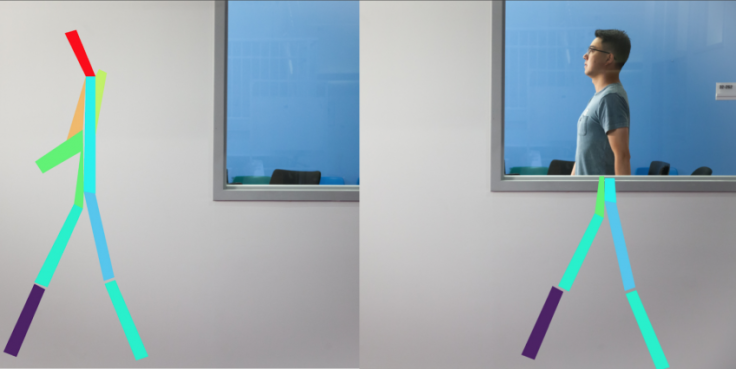MIT’s Artificial Intelligence System Can Detect People’s Postures, Movements Through Walls

The ability to see what’s happening on the other side of a wall or in another room has always been an aspect of science fiction. We don’t have a technology good enough to see directly through walls, but thanks to the power of machine intelligence, a group of researchers at MIT, Massachusetts, is inching closer to turn that case into reality.
The team at MIT Computer Science and Artificial Intelligence Laboratory is working on a project called RF-Pose. As part of this effort, they are using an AI-based system to sense the movement or posture of a person on the other side of a wall.
Essentially, as a person moves, walks, sits, jumps, or stops behind a wall, the neural network analyzes the radio signals bouncing off his/her body and generates confidence map using it. This map enables the system to create an active stick-like figurine which repeats the same action as the individual on the other side.
While neural networks are mostly trained with a massive set of labeled data, this specific case was different. The researchers had to train the AI to identify radio signals — which we can’t even see — bouncing from body movements.
So, the group took a different route and started collected images of different human movements and data related to the signals (from their wireless device) bouncing from them. They turned those images into stick-like figures and fed that data, with signals corresponding to the movements, into the neural network.
The technique worked and the system was able to associate signals with different movements and postures to produce a stick-figure corresponding to it. In post-development tests, it detected movement of the subject solely from the wireless signals reflecting off the body in all environments — when the person moved in the dark or on the other side of a wall.
The finding came as a surprise to the team at MIT because they never explicitly trained the system with data from the other side of the wall.
“If you think of the computer vision system as the teacher, this is a truly fascinating example of the student outperforming the teacher,” study co-author Antonio Torralba said in a statement.
Now, the team is working to advance the system and produce a 3-D stick figure which could detect even smaller body movements. They believe the technology could revolutionize health-care and help doctors monitor and better understand the advancement of diseases like Parkinson’s, multiple sclerosis, and muscular dystrophy in patients.
“We’ve seen that monitoring patients’ walking speed and ability to do basic activities on their own gives healthcare providers a window into their lives that they didn’t have before, which could be meaningful for a whole range of diseases,” Dina Katabi, the lead researcher behind the project, said in the statement. “A key advantage of our approach is that patients do not have to wear sensors or remember to charge their devices.”
Among other things, it could aid search and rescue missions or give elderly people the personal space they need, without having their children worry about security.
That said, as the “see-through” feature of the system can also raise some privacy concerns when integrated into a home or hospital settings, the researchers plan on introducing a consent mechanism in the future. As part of this, the person using the device will have to perform a specific set of movements to enable the device’s monitoring capabilities.
© Copyright IBTimes 2024. All rights reserved.





















